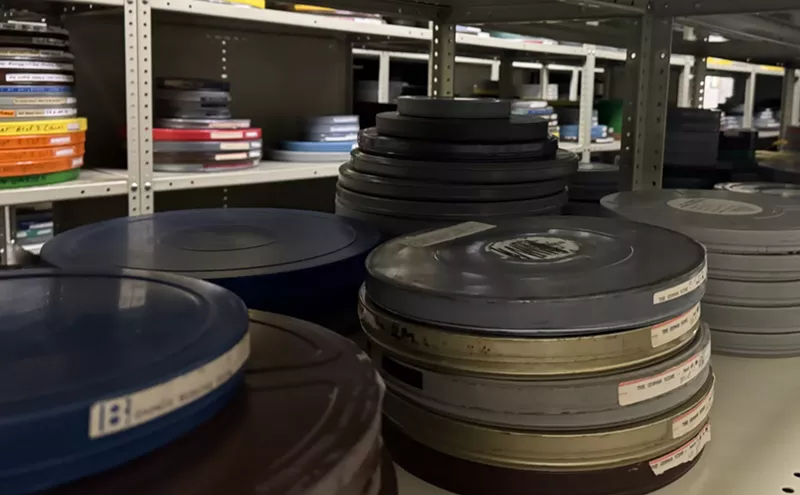But all this time, Hollandsworth has somehow never published a book. Given the richness of the stories he’s penned, it’s more than a little surprising, but he says he was simply waiting for the right subject to come along. "A story can be great for a magazine, but not qualify for a book," he says.
His debut, The Midnight Assassin: Panic, Scandal and the Hunt for America’s First Serial Killer (Henry & Holt Co), is a detailed look into the Midnight Assassin, “America’s first serial killer” who tormented Austin in 1885. On Tuesday, Hollandsworth will present his book at Arts and Letters Live at the Dallas Museum of Art. We spoke with the veteran storyteller about the crime writing of yesteryear, the perfect ending and O.J. Simpson.
How did you handle the mountain of research this book certainly required?
I don’t want to take credit for all of the research. There have been plenty of researchers over the years that have worked on this case. They’re the Austin version of Ripper-ologists, which are the guys in England that are obsessed with solving the Jack the Ripper murders. I had plenty of help from other researchers who have been interested in this case.
The research required for a case over a century old seems especially difficult.
This is a story about research because there wasn’t anything you could Google. There are no indexes or bibliographies in newspapers, especially 19th century newspapers. You just go through newspapers from Texas, and even as far out as New Orleans. At one point, I was in New York at the New York Public Library reading old New York World articles, because I wanted to find the needle in the haystack. As each day went by, I looked for the right story. Some days, that story would be on the front page, and some days it would be one sentence on the bottom of page four in a local notes column that would provide a turn in the narrative.
I’m haunted at night by what I did not see, by what article I didn’t find that might have given me more details on how the killings took place or what the cops did that would’ve helped me tell this story. Someone may come up to me at a book signing and say to me, “Skip, you idiot, if you had just looked into the archives of the New Braunfels library, you would’ve found the written confession in a letter the killer wrote to his mother.’
But then again, this may always be one of the great American murder mysteries that goes unsolved just like the Jack the Ripper murders in England."I’m convinced there’s another old box locked away somewhere that will give us a hint or a better clue as to who the killer was."
tweet this
Because you feel haunted by what you didn’t discover, will you revisit this subject in the future?
I will always be after more information. I first heard about this story in 1997, and started dabbling in it then, and I wrote a story about it in Texas Monthly in 2000, then dabbled some more. I thought about turning it into a book back then, but I wasn’t sure because I didn’t think I would have an ending unless I found the killer. But I began to think I would be able to solve the murders, which is a conceit that’s ridiculous.
Of course, I didn’t, but as the years have gone on, little details have emerged. In 2014, an archivist for Travis County found an old unopened box in the back of a storage room and it had handwritten transcripts for a couple of the trials that occurred for this case. It was the first time I saw a word-for-word account of what happened in those trials, as opposed to some newspaper articles I had seen before. That was 16 years after I started looking into this case.
I’m convinced there’s another old box locked away somewhere in an attic or in an old storage room that will give us a hint, or a better clue, as to who the killer was. Someone had to know who was slipping out of his house at night to perform these ritualistic slaughters of women.
In the book, you highlight many of the outlandish headlines related to the murders. How was crime reporting different in 1885 compared to now?
On one hand, the reporters were remarkably good stylists. They had descriptions of the bodies, they used hilarious alliterations in their headlines, and they clearly took lines from Edgar Allen Poe and Mark Twain, who was writing back then. They were immersed in the gloriously overblown writing of the late 19th century. But what they did not do was investigative reporting. They didn’t write any stories about who this killer could be early on, or analyze any of the crime scenes. Back then there really wasn’t the science of criminology and there was a racist belief that permeated everything. Most thought the murders were the work of a depraved black man who decided to do all of this by himself.
With issues like race, class and sex being center-stage, there really are a lot of parallels between the Midnight Assassin case and the O.J. Simpson murder trial aren’t there?
Later in the book, I wanted to write that the Jimmy Phillips trial was the O.J. Simpson trial of the 19th century in Texas. He had a dream team of defense attorneys, the courthouse was always packed and there was testimony about his murdered wife having had a secret life and would meet up with different men and that he was jealous of that.
There was a dramatic moment in the trial where a footprint had been found near the body and Phillips was asked to step onto a piece of paper to see if his footprint matched the one found on the scene. It didn’t match, and the defense attorneys basically said, though they didn’t use the exact phrase, "If it doesn’t fit you must acquit."
It was surprising to learn this is your first book. Was writing a book simply not on your radar?
Thanks a lot for pointing out my lack of ambition [laughs]. But book writing was always on my radar but I kept thinking this story wouldn’t translate into a book. I quit this book a half-dozen times. I would think I didn’t have enough research, or there was too much research to do. I worried about not being able to find the killer, which at the time, meant I wouldn’t have an ending. The big moment for me came when I realized the Midnight Assassin had never been caught and that’s precisely why a book should be written about him. There’s a spooky quality to this story without knowing who the killer is, I think.












